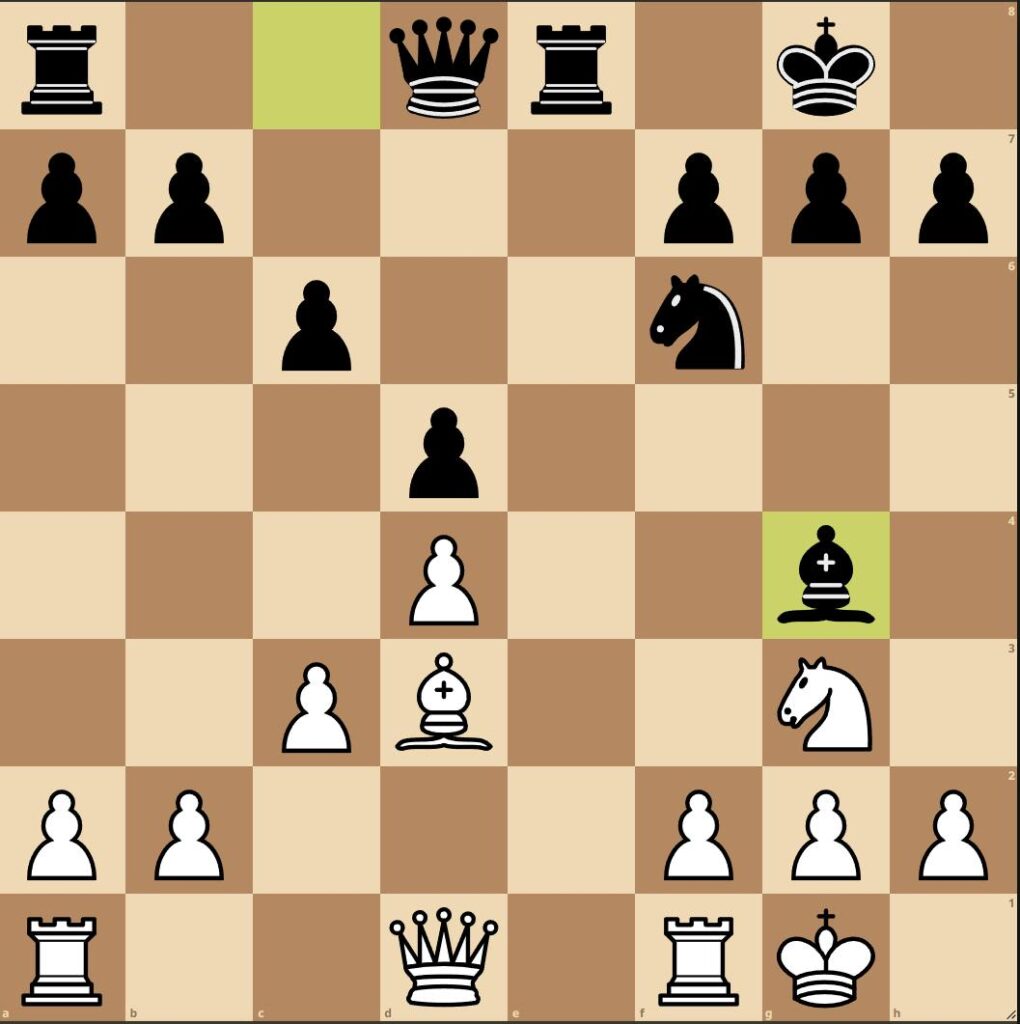Today, I will teach you how to think during a Chess game.
Most students draw a blank when I ask them: “What goes through your mind during a game?”
That’s a big problem! It is an explanation of a common phenomenon: Making moves you would never do without the adrenaline and stress.
Thanks to a simple thought process, you can make more logical decisions and avoid emotional decisions that cause disaster.
Right Process + Wrong Move is Better Than Wrong Process + Right Move.
Most good Coaches in any field have one thing in common: They obsess about the simple basics.
My Tennis Coach won’t let me serve with full power until I have the right technique.
Poker Coaches keep telling their students they shouldn’t make hero calls based on some intuition but rather think through each decision logically.
And I want my students to answer two questions during every single move of a Chess game:
1) What is my opponent’s move doing?
2) What is my opponent doing if I play (my move)?
Here is why & how:
How To Think During A Chess Game Step 1: Ask yourself “What Is My Opponent’s Move Doing?”
I get it. You have a cool idea and immediately want to think for yourself. But Chess is a two-player game. Your opponent is also allowed to make moves. And occasionally, they also have ideas and threats!
So, the first thing you should do is to try to understand what your opponent is up to. Right when they execute their move, look for ideas.
Three things to watch out for:
- Direct threats
- Plans/Maneovers
- Weaknesses caused by the last move
Some Chess players literally do not look at what the opponent just did. They are so excited about their own plans that they can’t be bothered to look for their opponent’s ideas. They continue with their own plan until they lose material or “suddenly” get checkmated.
Even if the opponent’s move literally screams, “I’m ATTACKING YOUR QUEEN.”
This problem has only one cure: discipline. Whenever your opponent moves a piece, shortly look out for threats with that piece. Going a little deeper, also check for potential discovered attacks. If you are playing online, you can even say the attacked pieces out loud.
|
Watch out for your Opponent’s idea! |
“Bc8-g4, my opponent attacks my Queen on d1”. Nice, now you know what to do!
If nothing is directly attacked, shortly think about what idea they might have had in mind when playing the last move. Yes, sometimes our opponents just move a random piece or blunder.
But more often than not, they had some idea. Be it good or bad, you have way better chances to win the game if you spot the idea early enough. You don’t need to be too sophisticated. If they let a piece hang, shortly ask, “What happens if I take it?” or if they make an obscure piece maneuver, ask yourself, “Where is this piece going?”.
This will be enough to spot 90% of their plans.
How To Think During A Chess Game Step 2: Double Check Before Playing
Now, you can finally think of your own ideas. Shortly check what the last move allowed in your opponent’s position. Sometimes, they move a piece that was defending an important square/piece. You might now take advantage of that.
Otherwise, think about your own plans and come up with several candidate moves. Check them in the following order:
- Checks
- Capture
- Threats
But hey, be patient! That’s where many go wrong. Spotting a nice move, many can’t resist and just execute it without thinking it through clearly.
That’s how blunders happen.
When spotting a move that seems to lead to a winning or favorable position, take a deep breath and ask yourself:
“What is my opponent doing if I play (my move)?”
This little question has saved me and many of my students valuable points. It is a last little blunder check to avoid missing a little opponent’s idea.
Not spotting any good idea for your opponent, you can now go ahead and play your move.
Simple Thought Process For Every Move
Here is how to think during a Chess game:
- First, check for ideas for the opponent connected to their last move.
- Then think of your own ideas by checking Checks, captures & only then threats.
- Before you execute your move, double-check for simple oversights.
Apply this little thought process during any game you play until it becomes second nature.
Obviously, there are more sophisticated ways to think during a Chess game. But as my Tennis Coach would say:
“Don’t go hard until you do the basics right. Every time.”
Keep improving,
Noël
Whenever you’re ready, there are 2 ways I can help you:
- My Course, Next Level Training: Join 400+ motivated Chess improvers inside Next Level Training. This course will teach you everything you need to know about studying chess on your own. From solving chess tactics the right way to building an opening repertoire and analyzing your own games, everything is in here.
- Get my Chess Training Planner. This is the perfect help to schedule your chess training and review each session. The Planner will help you to study chess more effectively and get more out of every session.
This Blog was originally sent out as a Newsletter to 13,500+ chess fans. If you want to receive the free weekly newsletter, make sure to sign up here.
